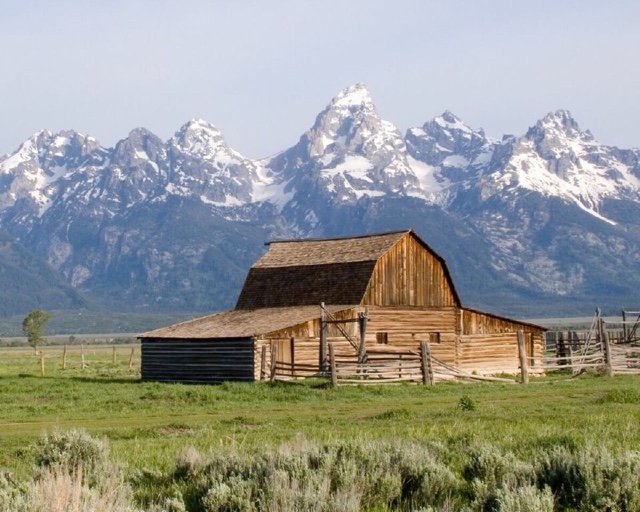Jackson Hole By the Numbers
Population
Town of Jackson: 10,135
Teton County: 22,268
Visitation (2010-2015)
Average Annual Visitation: 2,600,000
Average Visitation in January: 42,251
Annual Visitation in July: 666,610
Weather
Jackson Hole Mountain Resort Average Snowfall: 459 inches
Town of Jackson Average Snowfall: 74 inches
Average High in January: 27 oF / -3 oC
Average Low in January: 5 oF / -15 oC
Average High in July: 81oF / 27 oC
Average Low in July: 38oF / 3oC
Geography & Wildlife
Highest Point: Grand Teton, 13,775 feet above sea level
Teton County: 3,826,407 acres
Land Managed by Federal Government: 97%
National Elk Refuge Wintering Herd: 6,000-7,000 elk
Common Wildlife: Grizzly Bears, Black Bears, Wolves, Moose, Deer, Pronghorn Antelope
The South, Middle, and Grand Teton were named by French trappers who gave them the nickname: “Les TroisTetons” or “The Three Breasts”
Federal Landholders
Yellowstone National Park
Grand Teton National Park
National Elk Refuge
Bridger-Teton National Forest
Jackson Highlights:
Jackson Hole elected the first all-woman city government in America in 1920.
Wyoming was the first state in the nation to grant women the right to vote in 1869
First “Gigabiz” community in Wyoming with speeds of up to 1 gigabit per second
Movies filmed in Jackson Hole include Quentin Tarantino’s “Django Unchained” and George Stevens’ “Shane.” It also stood in for Russia in “Rocky IV.”
Snow King Resort, was established in 1930 as the first ski area in Wyoming
Q: WHERE AM I? JACKSON OR JACKSON HOLE?
A: Both. Jackson Hole is a valley about 80 miles long and 15 miles wide; Jackson is the major town within the valley. The hole begins six miles south of Yellowstone Park and tapers down to the width of the Snake River at Munger Mountain, south of Jackson. The town was named Jackson Hole in 1894 when the post office was established. Many other holes were named in the intermountain west during the 1800's but few were marked on the maps.
Jackson Hole Geography Narrative
Jackson Hole is a valley encompassed by mountains. The valley is 48 miles long and 8 to 15 miles wide, and the valley floor slopes from 6,779 feet above sea level in the north to about 6,069 feet at the southern end.
The Snake River, originating in the high country of Yellowstone, makes its meandering way through the valley, fed by streams and rivers, such as the Gros Ventre River and Flat Creek. Along the western side of the valley, the famous Teton Mountains rise into the sky, a sharp soaring of rock without the preamble of foothills to separate the massive mountains from the valley floor. Several lakes lie along the base of the range; among them is large Jackson Lake. Grand Teton, the tallest mountain in the range, is 13,772 feet above sea level, towering over Jenny Lake at its base. In the valley to the east, the Gros Ventre (Big Belly) Mountains roll up a little more gently from the valley floor.
Grand Teton National Park occupies most of the valley of Jackson Hole, preserving the towering peaks of the Teton Mountains and the beautiful glacial lakes. The native wildlife includes moose, mule deer, pronghorn antelope, elk, grizzly and black bear, bison, and trumpeter swans. To the delight of the park's visitors, many of the large animals roam undisturbed across the valley floor, and numerous trails lead into the mountains to satisfy adventurers. Today the park includes 485 square miles or 310,000 acres.
The town of Jackson is located near the southern end of the valley, nestled between the Hoback Range, which contributes Snow King Mountain to the southern boundary of the valley, and East Gros Ventre Butte. The butte is one of several that punctuate the valley, varying the flatness of the Snake River plain with the rocky humps of ancient landforms.
Jackson is the seat of Teton County, which was created in 1921, more than thirty years after Wyoming became a state in 1890. As of 2010, Teton County had a year-round population of about 21,294, and Jackson had a population of 9,577. A number of temporary residents swell the population totals during the tourist seasons – in the summer months by 52,000 and by 5,000 in the winter months. The county has a large land area – 2,697,000 acres or 4,214 square miles. Nearly 97% of the county is public land.
With a great expanse of public land, including two national parks, tourism is the most important industry in the area. Grand Teton National Park lies in the heart of Jackson Hole, and Yellowstone National Park is only a few miles to the north. The town of Jackson serves as a gateway to both parks. Grand Teton National Park typically hosts between 3,000,000 and 4,000,000 visitors each year. The total indicates the popularity of the area and the health of the industry. A few ranches remain in operation in the valley, reminding the residents of the area's original economic base. Many of the ranch operations, however, supplement their income with tourism, as guest ranches and headquarters for outfitting hunters and fishermen.
Updated: October 9, 2015
For more information, visit: http://www.jacksonholechamber.com/















No comments:
Post a Comment